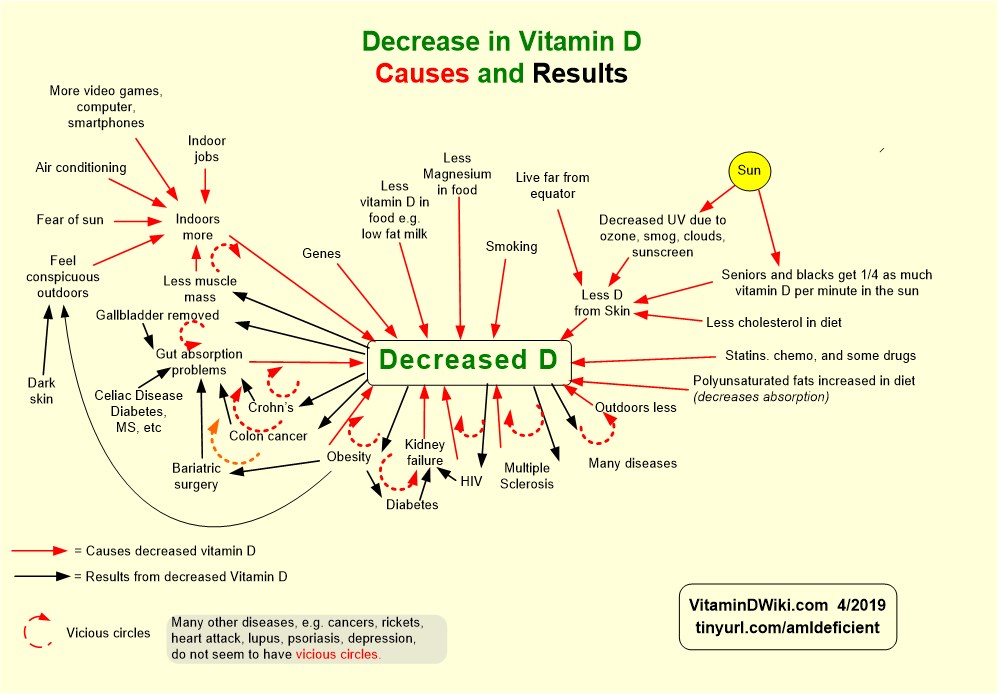Unable to make a model to predict vitamin D deficiency
Can a model predictive of vitamin d status be developed from common laboratory tests and demographic parameters?
South Med J. 2011 Sep;104(9):636-9.
Peiris AN alan.peiris@va.gov , Bailey BA, Guha BN, Copeland R, Manning T.
From the Departments of Internal Medicine and Family Medicine, East Tennessee State University; and Mountain Home VAMC, Johnson City, TN.
OBJECTIVES: Vitamin D deficiency is highly prevalent and has been linked to increased morbidity and mortality. There has been an increase in testing for vitamin D with a concomitant increase in costs. While individual factors are significantly linked to vitamin D status, prior studies have not yielded a model predictive of vitamin D status or 25(OH)D levels. The purpose of this investigation was to determine if a prediction model of vitamin D could be developed using extensive demographic data and laboratory parameters.
METHODS: Patient data from 6 Veterans Administration Medical Centers were extracted from medical charts.
RESULTS: : For the 14,920 available patients, several factors including
triglyceride level,
Race,
total cholesterol,
body mass index,
calcium level, and
number of missed appointments
were significantly linked to vitamin D status.
However, these variables accounted for less than 15% of the variance in vitamin D levels .
While the variables correctly classified vitamin D deficiency status for 71% of patients, only 33% of those who were actually deficient were correctly identified as deficient.
CONCLUSION: : Given the failure to find a sufficiently predictive model for vitamin D deficiency, we propose that there is no substitute for laboratory testing of 25(OH)D levels. A baseline vitamin D 3 daily replacement of 1000-2000 IU initially with further modification based on biannual testing appears to factor in the wide variation in dose response observed with vitamin D replacement and is especially important in high-risk groups such as ethnic minorities.
PMID: 21886082
VitaminDwWiki notes that they did seem to consider such important factors as:
age,
pregnancy
amount of time outdoors – and clothing
latitude
recent trauma or surgery
gut problems
kidney failure
lack of co-factors such as Magnesium
smoking
statins and other drugs
many of the above factors are not 'demographic'
See also VitaminDWiki
Predicted vitamin D levels during pregnancy were sort of similar to those measured – Jan 2013
Google Search of VitaminDWiki for Peiris 113 as of Feb 2013
Overview Deficiency of vitamin D which contains the following chart

